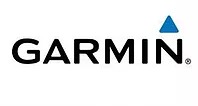WHAT IS ADS-B ?
ADS-B is radically new technology that is redefining the paradigm of COMMUNICATIONS – NAVIGATION – SURVEILLANCE in Air Traffic Management today. Already proven and certified as a viable low cost replacement for conventional radar, ADS-B allows pilots and air traffic controllers to “see” and control aircraft with more precision, and over a far larger percentage of the earth’s surface, than has ever been possible before.
| Automatic | – |
It’s always ON and requires no operator intervention |
| Dependent | – | It depends on an accurate GNSS signal for position data |
| Surveillance | – | It provides “Radar-like” surveillance services, much like RADAR |
| Broadcast | – | It continuously broadcasts aircraft position and other data to any aircraft, or ground station equipped to receive ADS-B |
HOW DOES IT WORK?
Far different from radar, which works by bouncing radio waves from fixed terrestrial antennas off of airborne targets and then interpreting the reflected signals, ADS-B uses conventional Global Navigation Satellite System (GNSS) technology and a relatively simple broadcast communications link as its fundamental components. Also, unlike radar, ADS-B accuracy does not seriously degrade with range, atmospheric conditions, or target altitude and update intervals do not depend on the rotational speed or reliability of mechanical antennas.
In a typical applications, the ADS-B capable aircraft uses an ordinary GNSS (GPS, Galileo, etc) receiver to derive its precise position from the GNSS constellation, then combines that position with any number of aircraft discretes, such as speed, heading, altitude and flight number. This information is then simultaneously broadcast to other ADS-B capable aircraft and to ADS-B ground, or satellite communications transceivers which then relay the aircraft’s position and additional information to Air Traffic Control centers in real time.
The 978 MHz Universal Access Transceiver (“UAT”) variant is also bi-directional and capable of sending real-time Flight Information Services (“FIS-B”), such as weather and other data to aircraft. In some areas, conventional non-ADS-B radar traffic information (“TIS-B”), can also be uplinked as well.

We support the following brands





